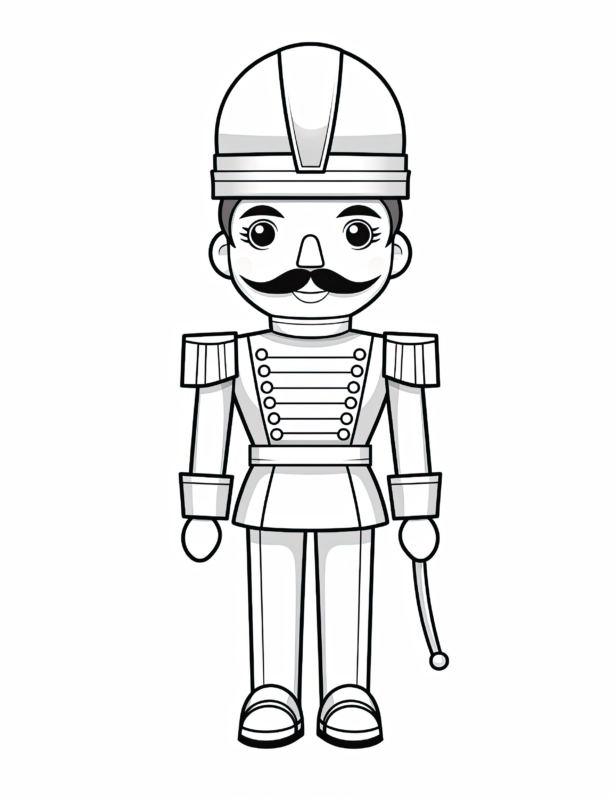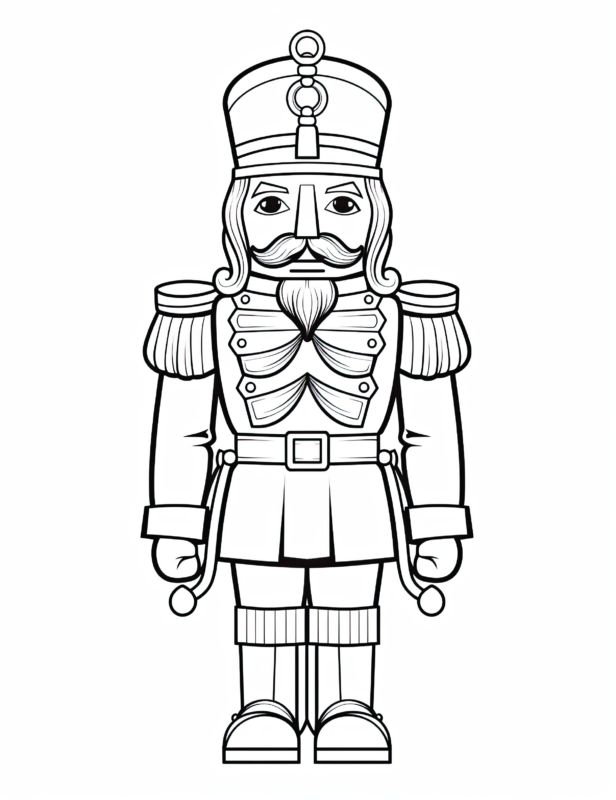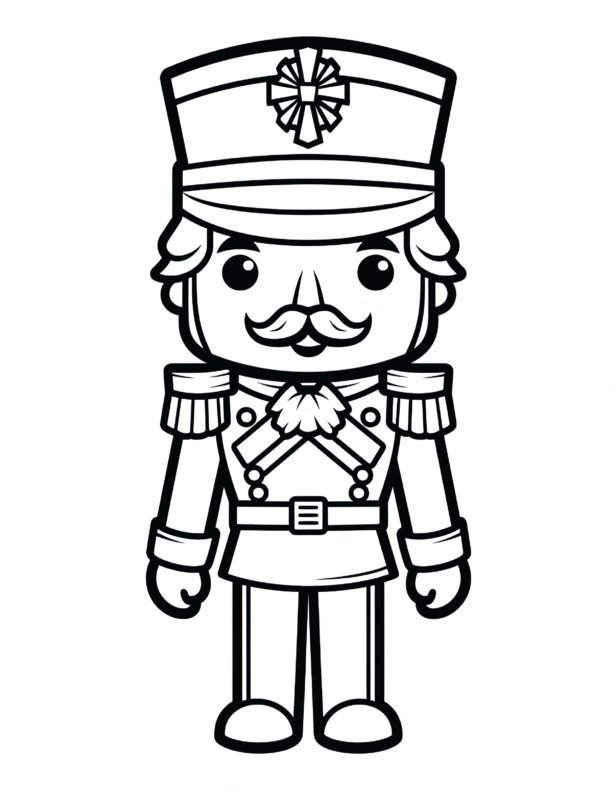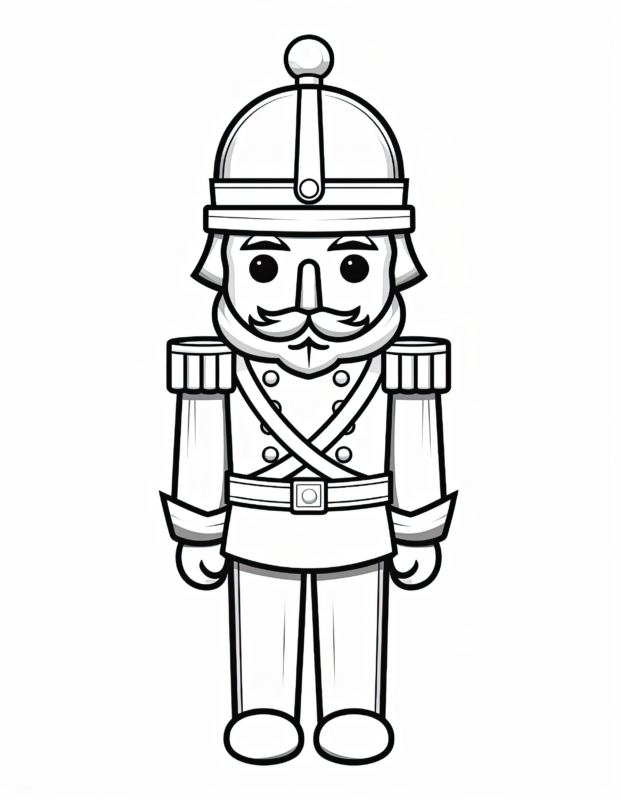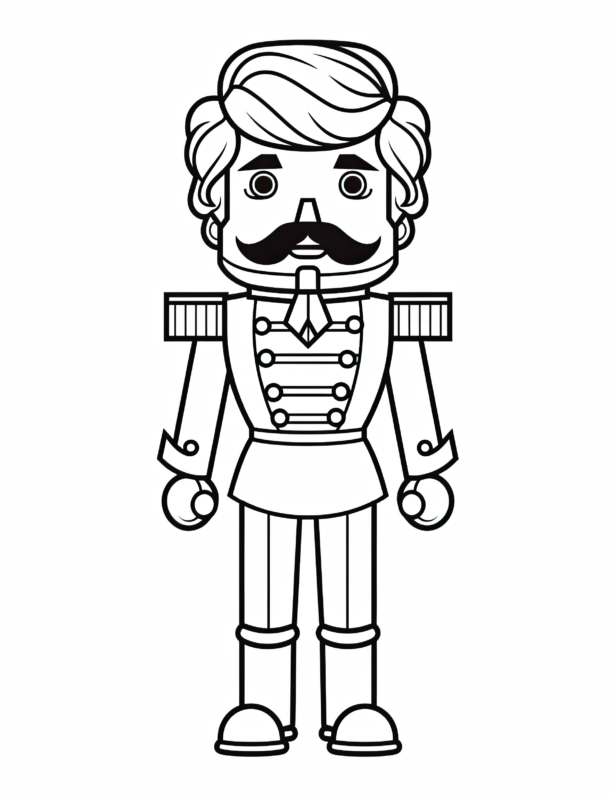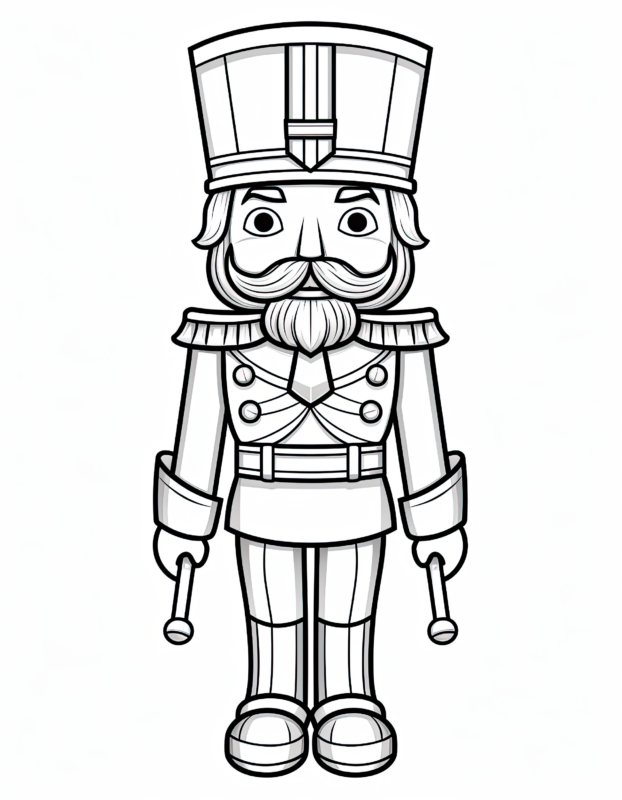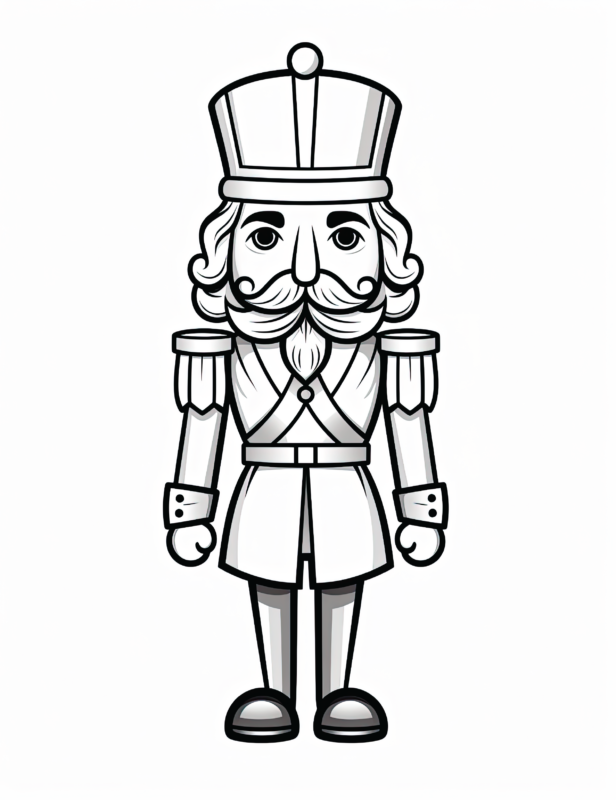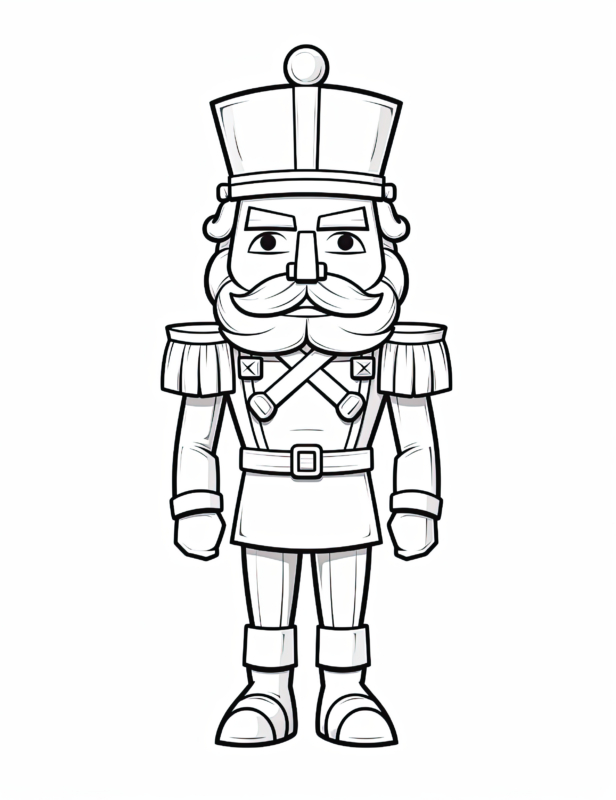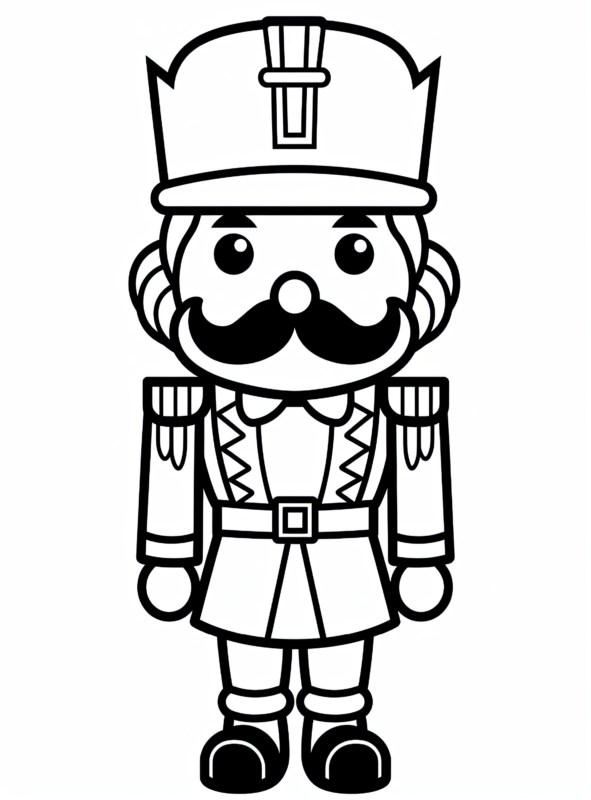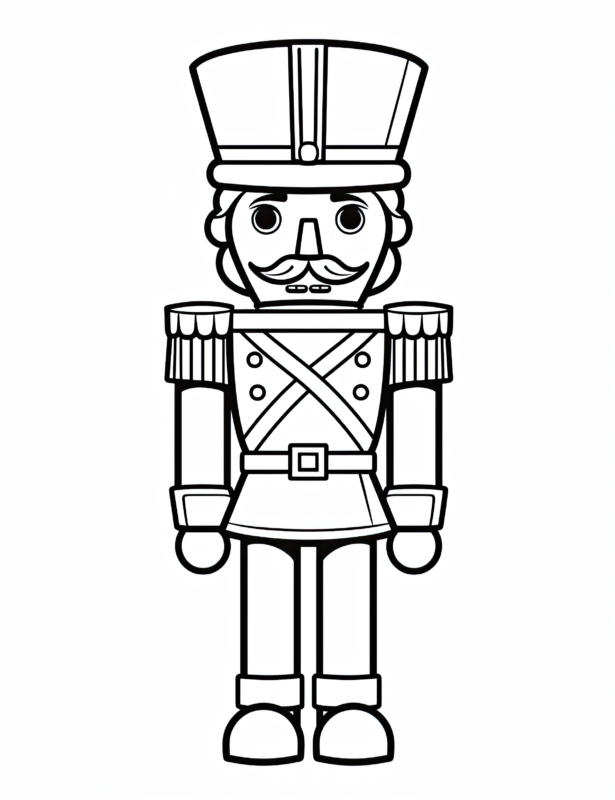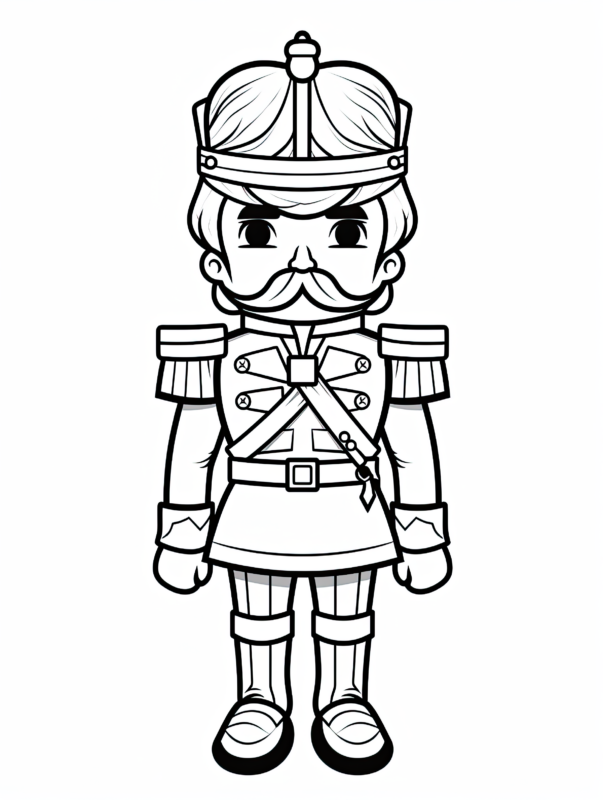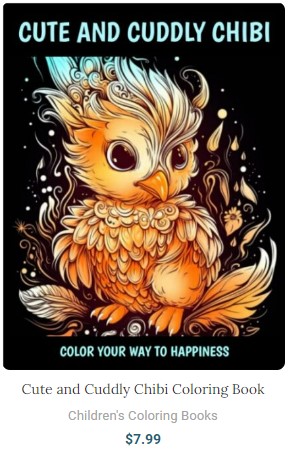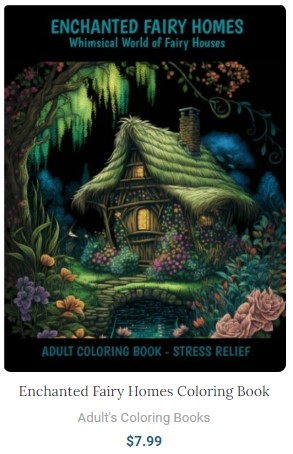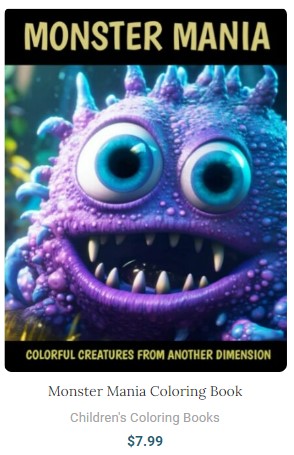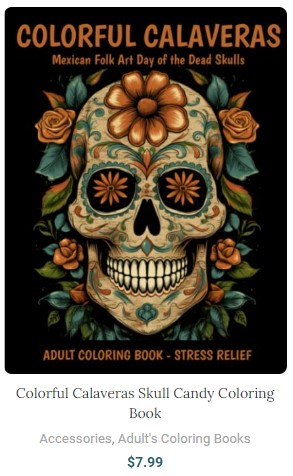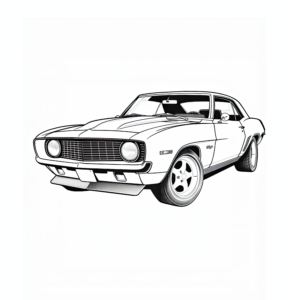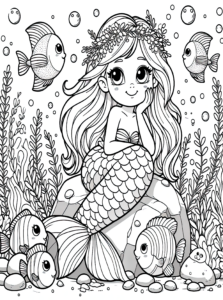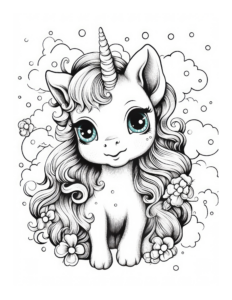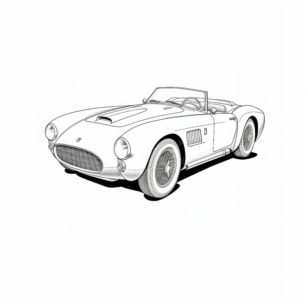11 Fascinating Facts About Christmas Nutcrackers You Probably Didn’t Know
Hello, my creative friends! I am absolutely thrilled to bring you an extra special holiday treat today. We have a delightful collection of free Christmas coloring pages that are sure to bring some festive magic to your world! But wait, there’s more! In the spirit of Christmas and the joy of giving, I’ve decided to spice things up a bit. Alongside these delightful coloring pages, we’re going to dive into a fascinating journey into the history of nutcrackers.
SHARE THE LOVE
WHICH ONE TO CHOOSE?
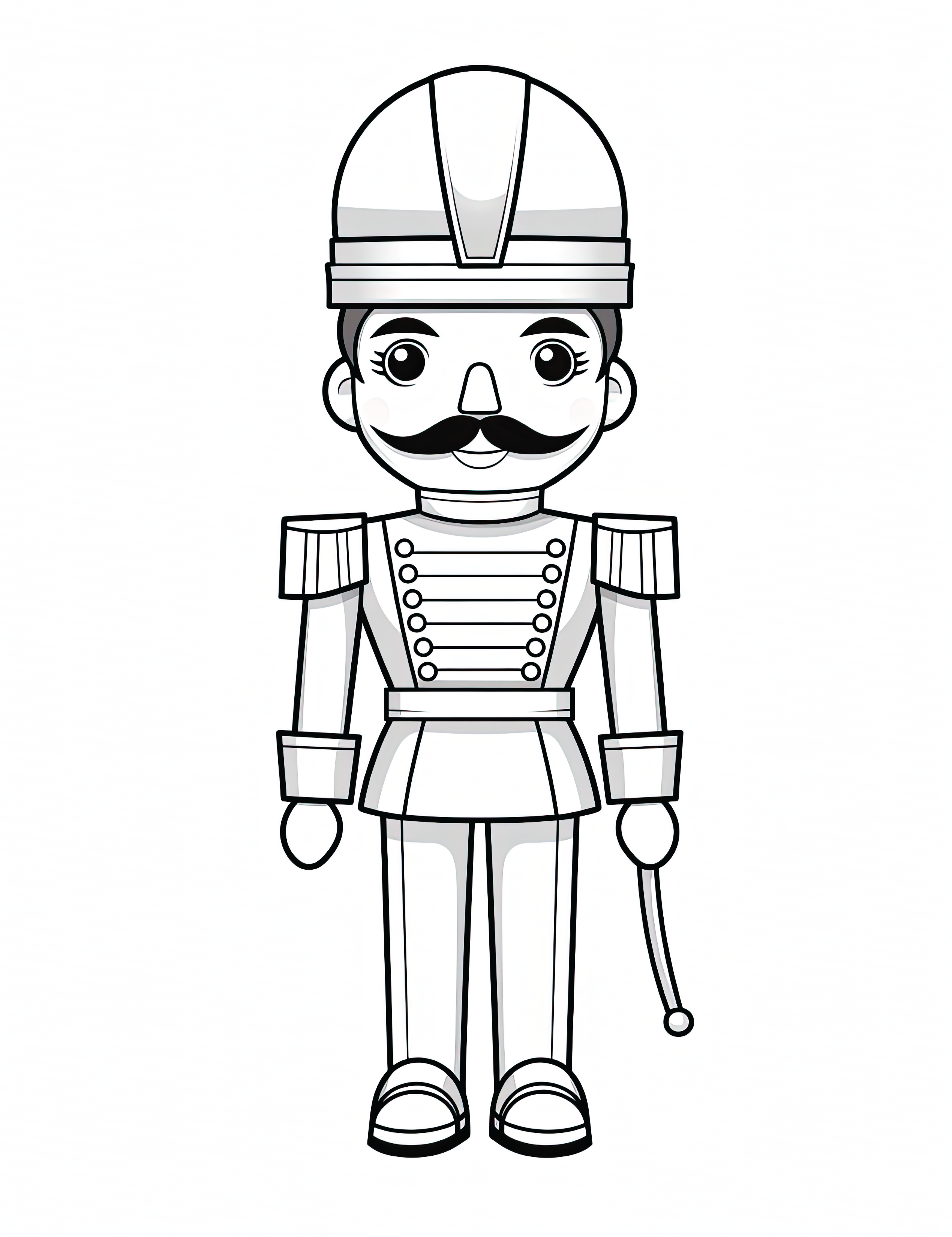
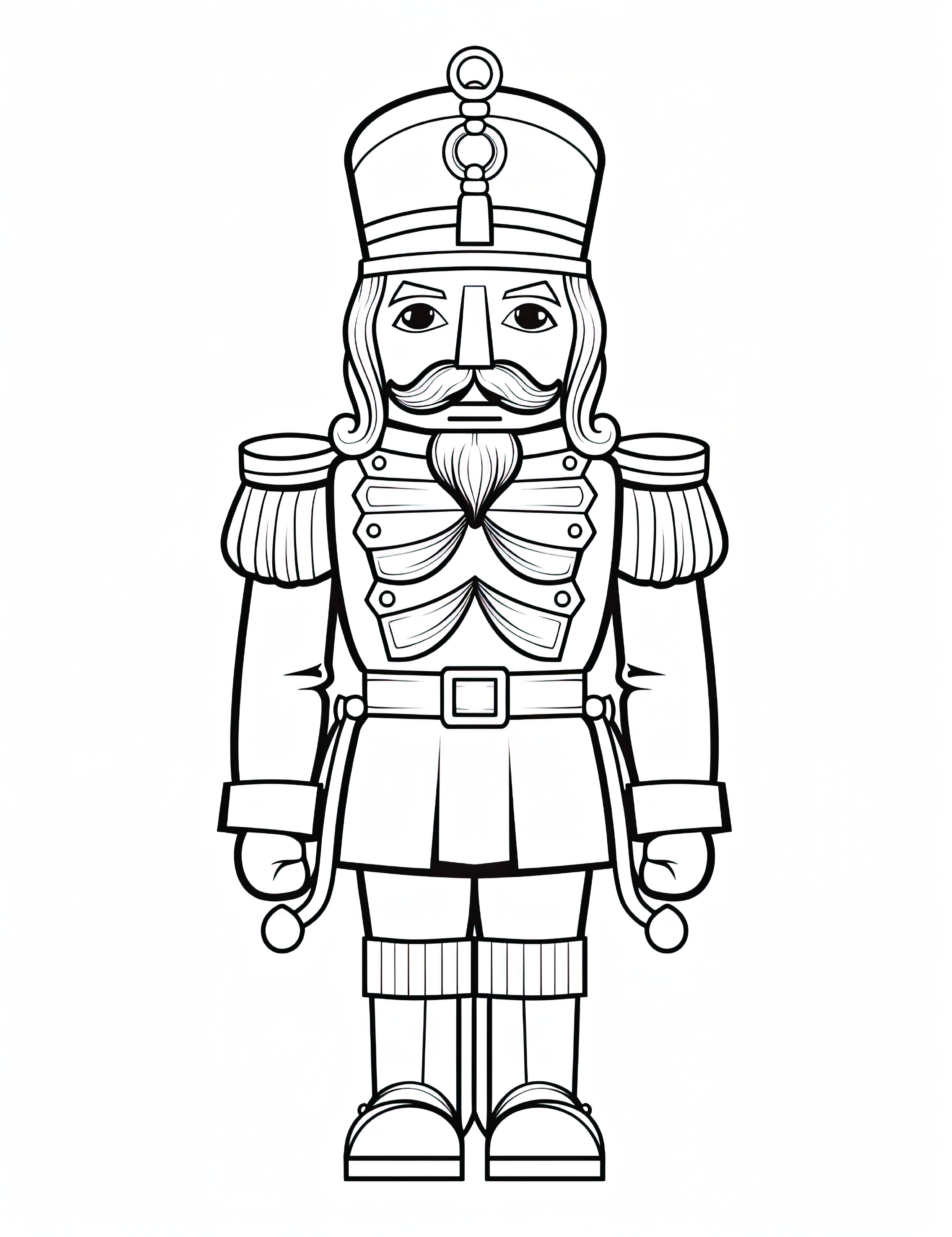
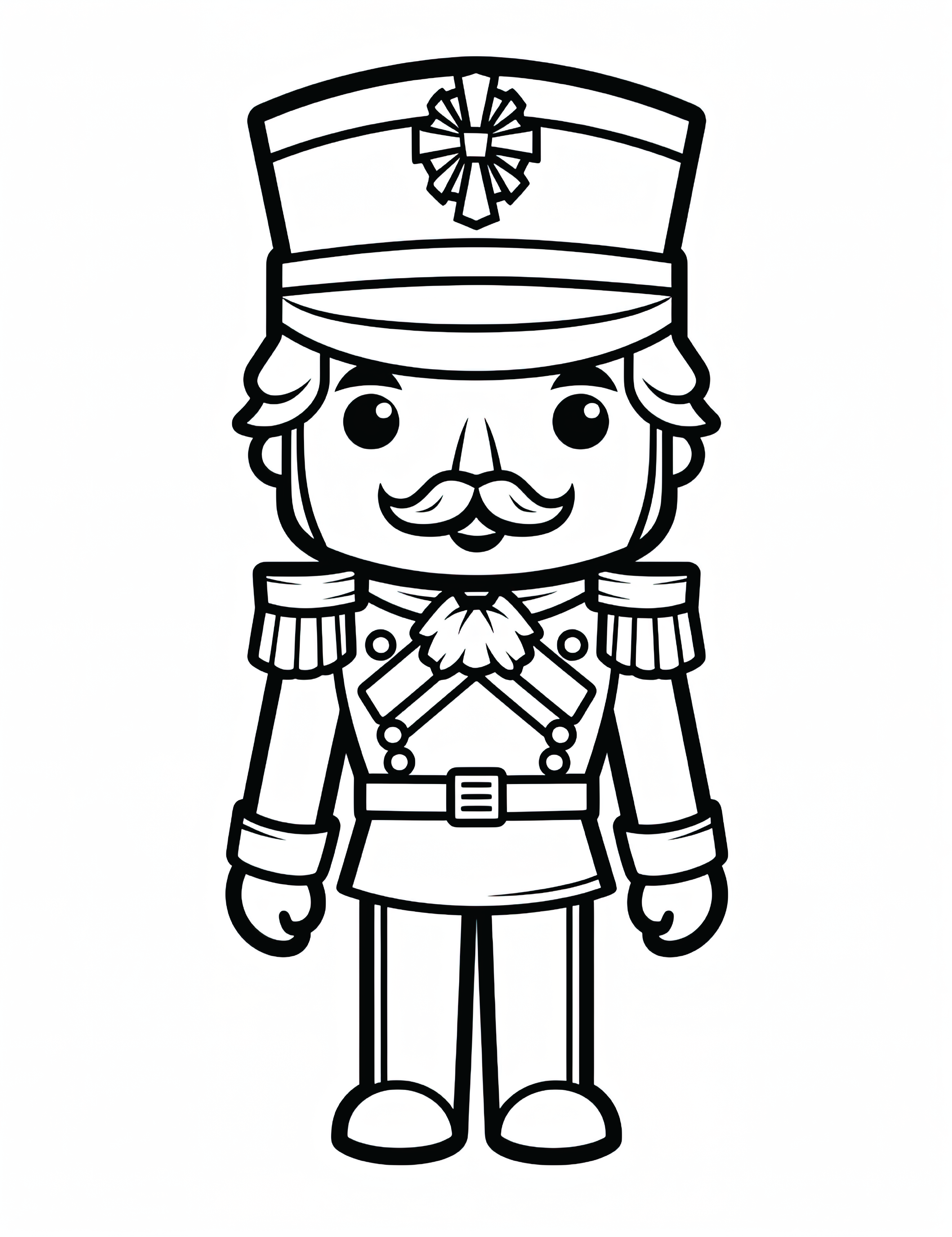
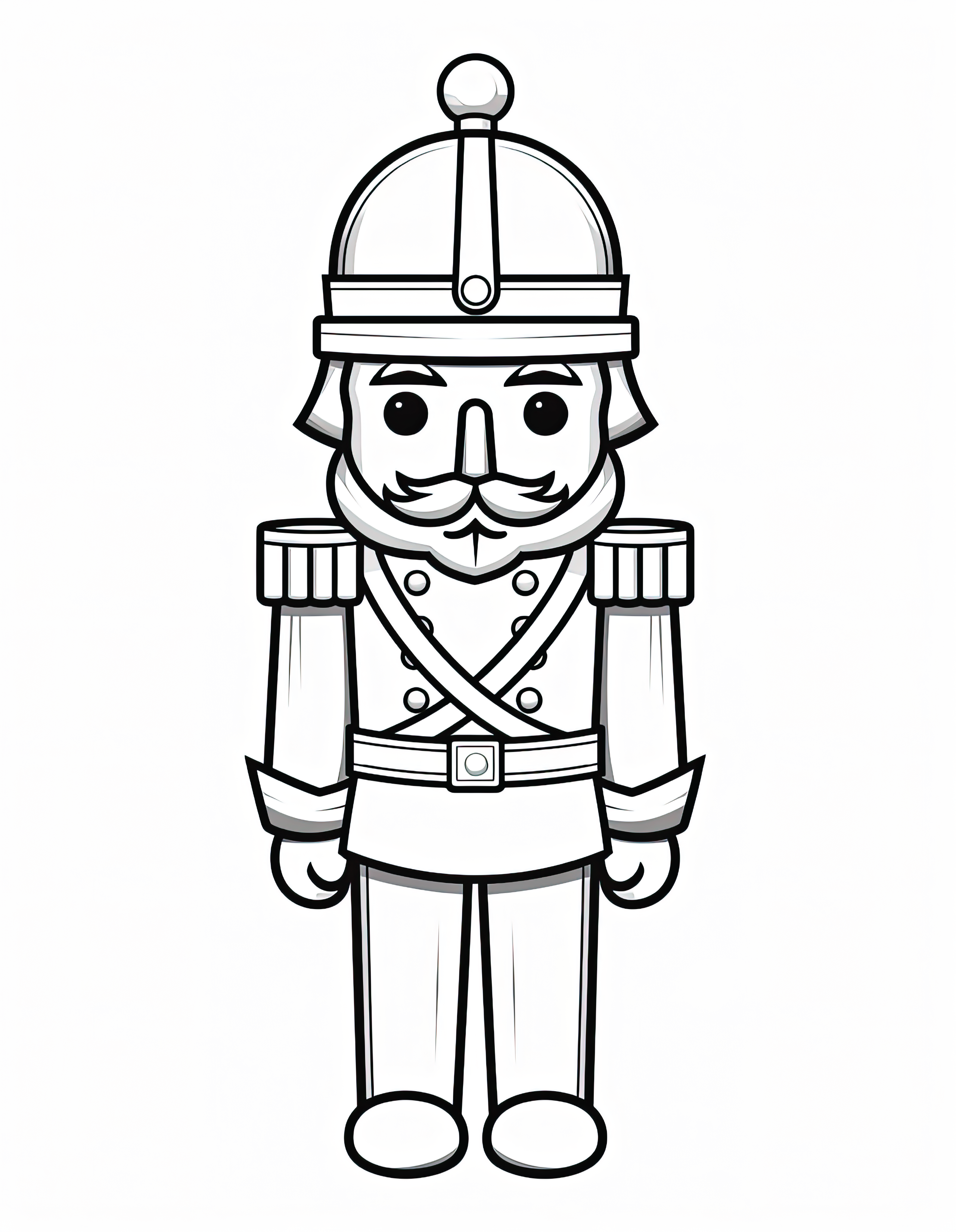
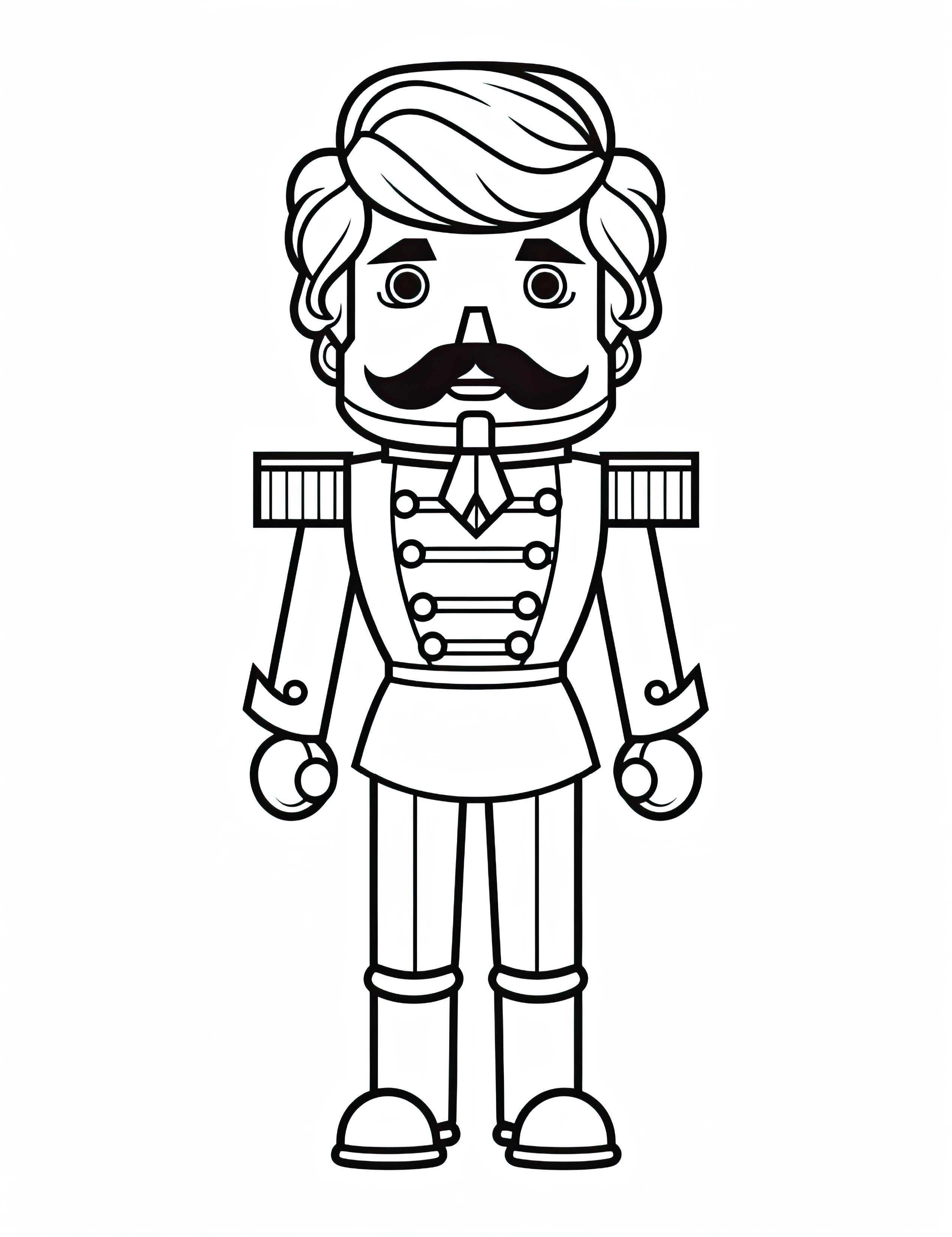
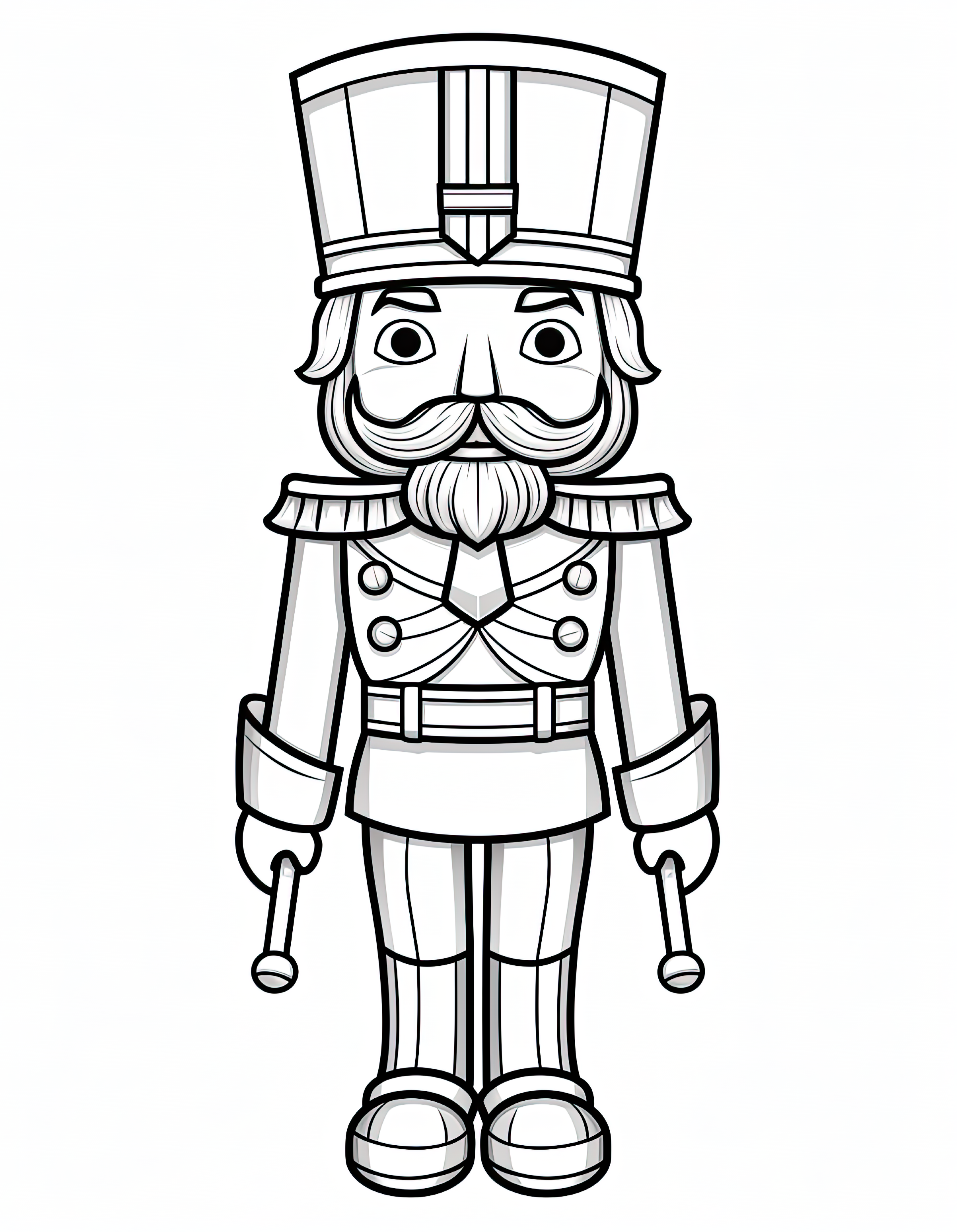
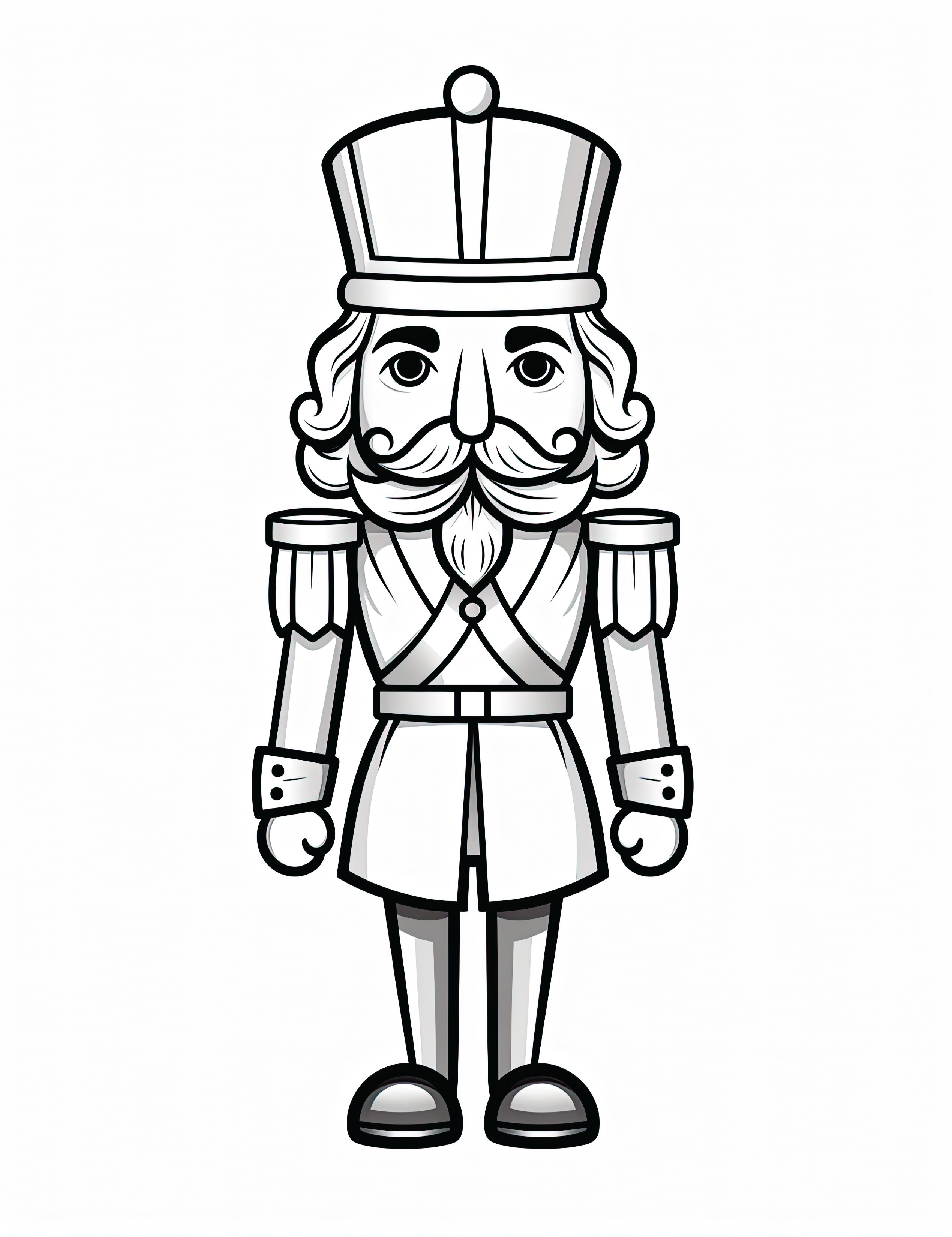
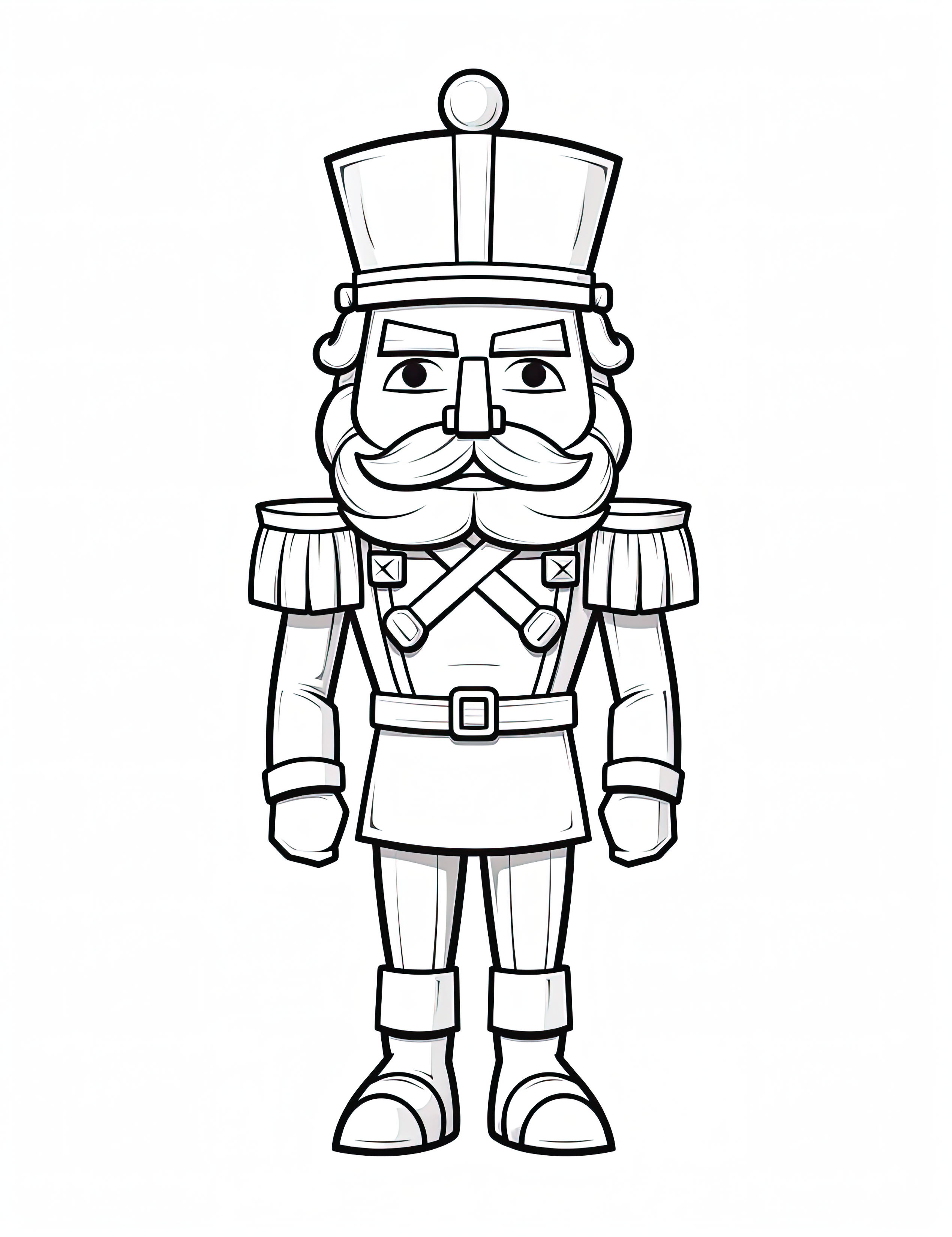
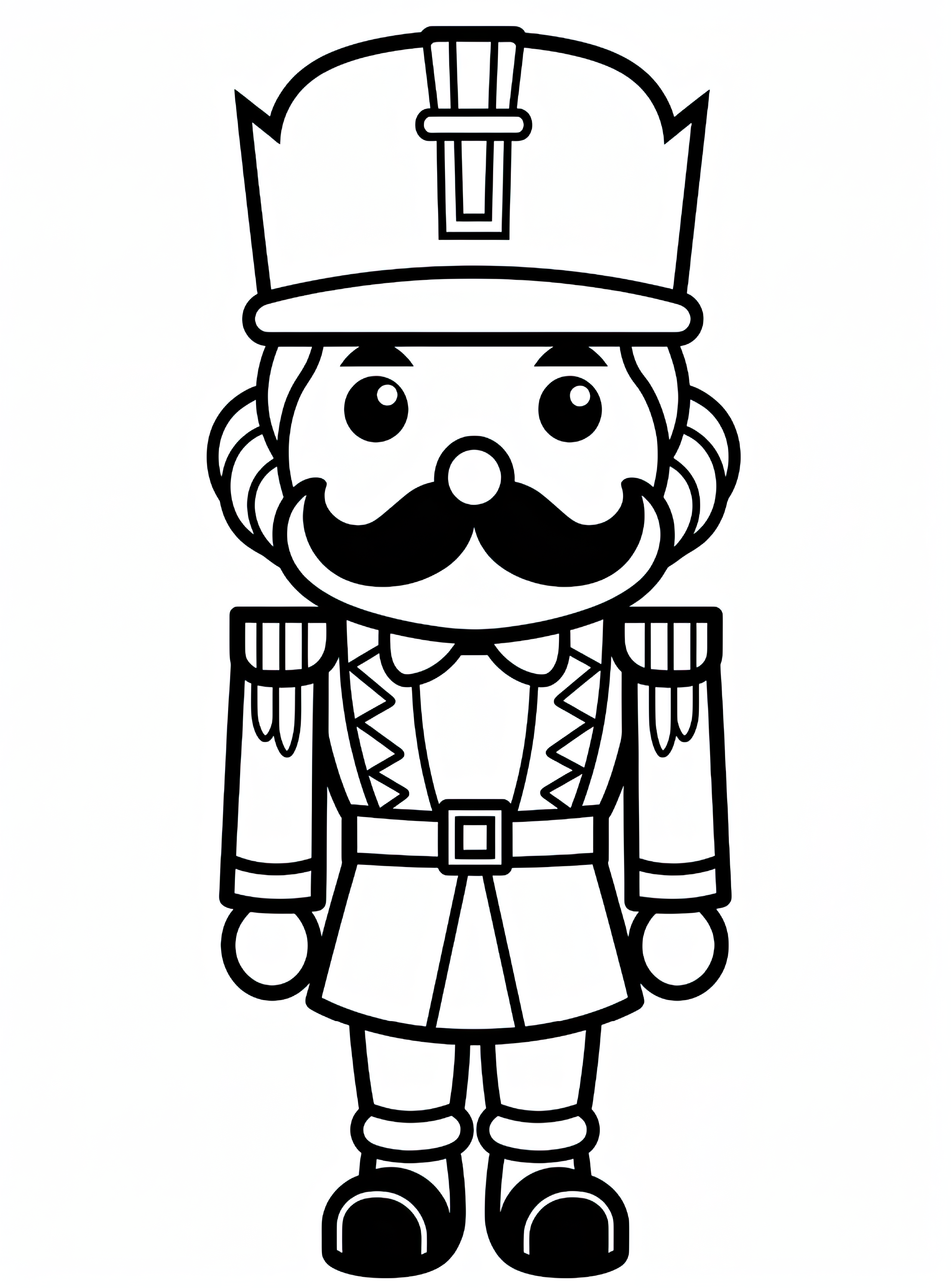
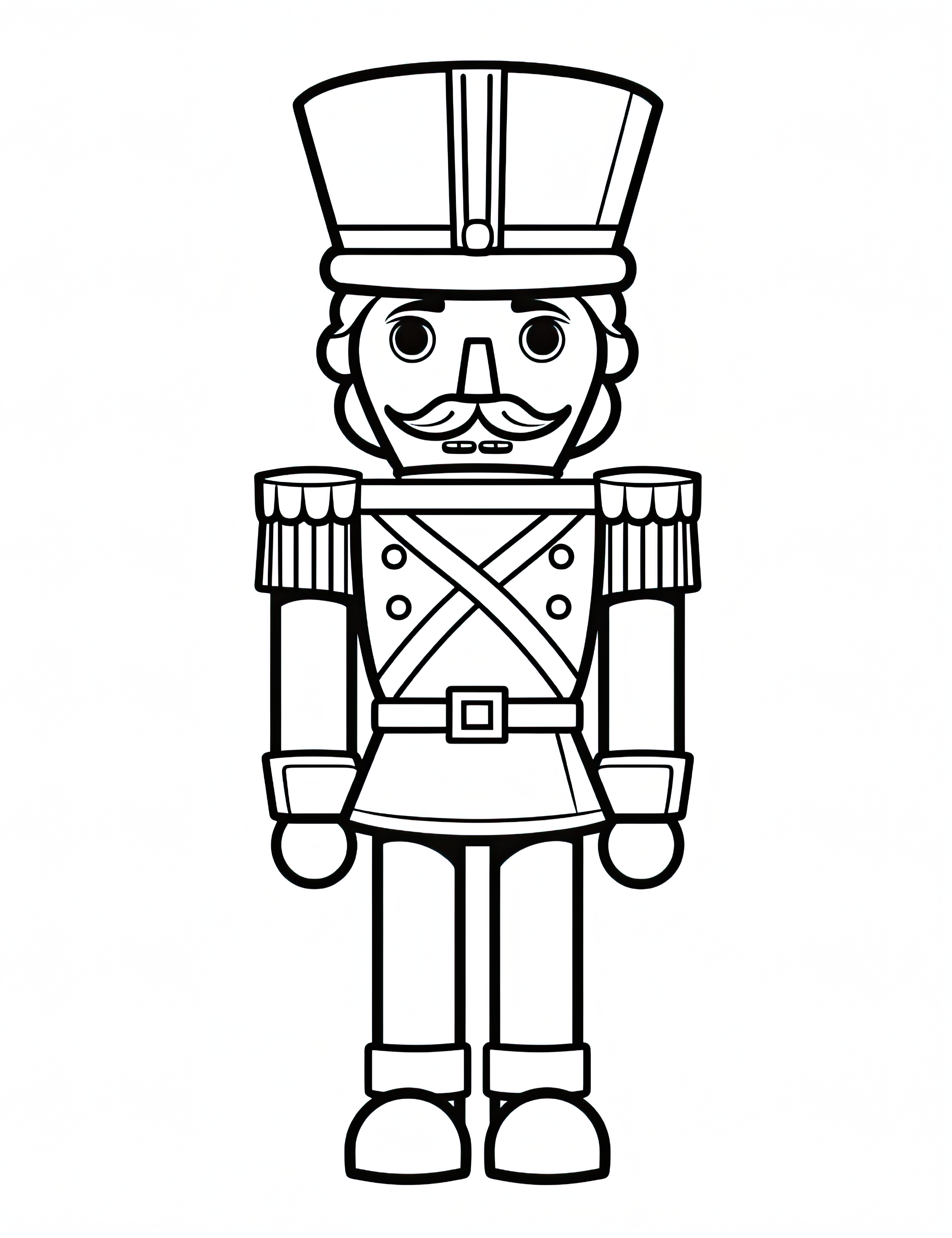
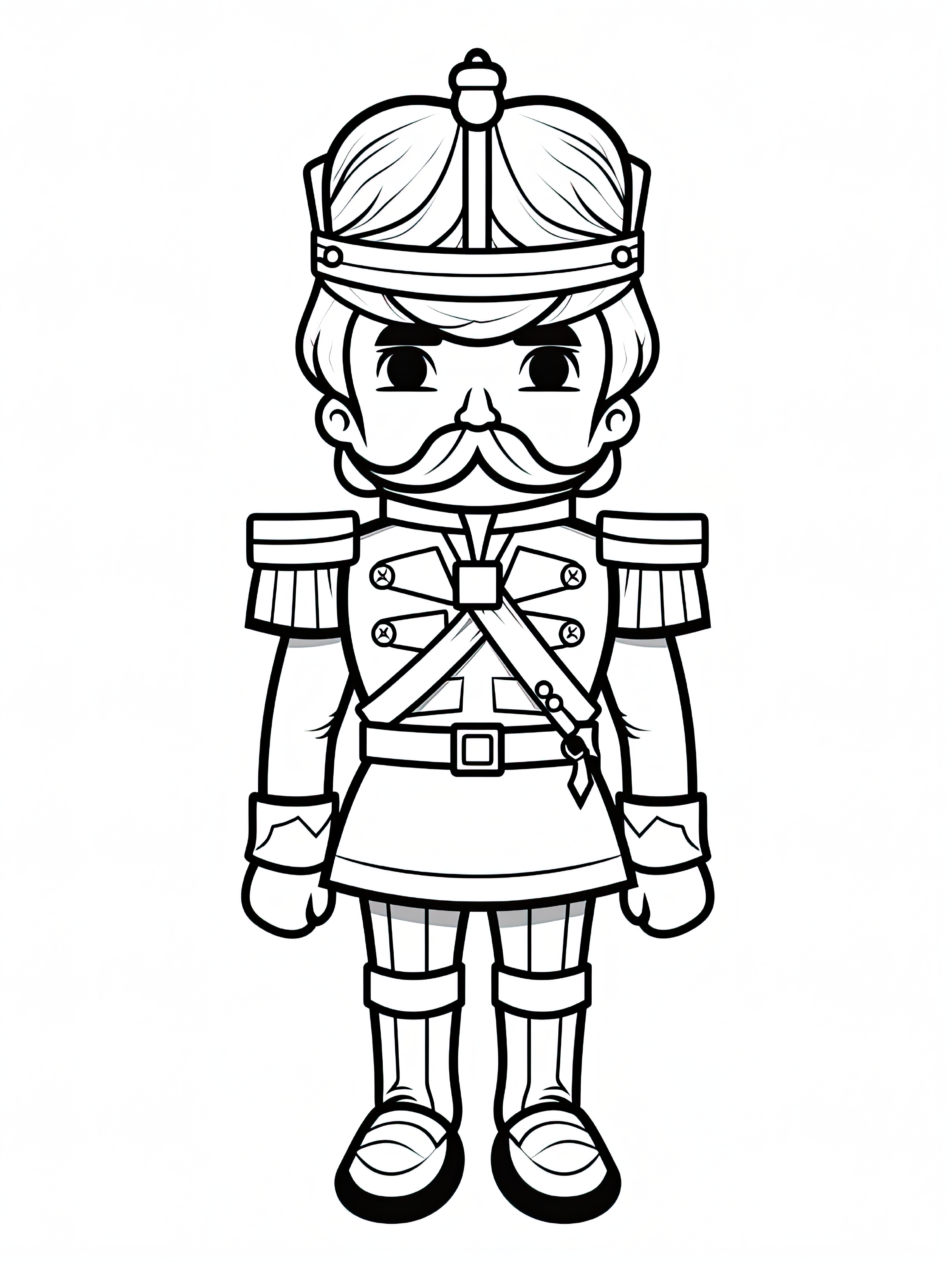



































































































*These are all Free Printable Coloring Sheets. I am offering these for non-commercial use.
*You can print out as many as you want to share with your family and friends. They are designed for both adults and children.
These iconic holiday figures have a rich and storied past that’s worth exploring. So, grab your colored pencils and join me as we not only add some holiday cheer to our day but also uncover the intriguing tale behind these beloved Christmas collectibles. Let’s make some merry memories and learn something new together this holiday season!”
Start Here or Scroll Down to see the Free Nut Cracker Coloring Pages
Table of Contents
A Symbol of Good Luck and Protection
Nutcrackers are not just festive decorations but carry with them a deep-seated symbolism of good luck and protection that resonates with many around the globe.
The tradition of nutcrackers as symbols of good luck is rooted in German folklore, where these wooden figures were thought to bring good fortune to the family and protect the home. It was believed that the strong jaws of the nutcracker could crack open not just nuts but also the ill will or negative energies that might enter a home. By displaying a nutcracker in the household, families hoped to safeguard their loved ones and invite positivity into their lives.
This belief in the nutcracker’s protective powers also extended to the idea that they could serve as guardians. With their origin as figures of authority—kings, soldiers, knights—it was thought that they could ward off evil spirits and protect the innocence of childhood, embodying the strength and security that the figures they represent provide.
The good luck associated with nutcrackers is also tied to the New Year. In some traditions, it is customary to crack nuts on New Year’s Eve with a nutcracker, signifying the breaking away from the old year’s hardships and the welcoming of new, hopeful beginnings. As such, giving a nutcracker as a gift for Christmas or New Year’s is often seen as a gesture of wishing prosperity and good health to the recipient.
SHARE THE LOVE
Originating from Germany
The nutcracker, as we commonly know it today, boasts origins deeply rooted in German history and craftsmanship, specifically from the Ore Mountains, or Erzgebirge, in Germany.
The birth of the traditional wooden nutcracker can be traced back to the late 17th century in this region. The Erzgebirge was known for its mining industry, but when the mines began to deplete, the miners needed to find alternative sources of income. Many turned to woodworking, a skill they already possessed from shoring up mine tunnels. It wasn’t long before they began carving intricate figures from wood, which included nutcrackers.
The design of these nutcrackers often reflected common figures of authority, like kings, soldiers, and knights—echoing the social structures of the time. These figures were not just ornamental; they served a practical function, as their strong jaws could crack open the hard shell of nuts, a popular food staple especially during the winter months.
Over time, the German nutcrackers began to gain prominence, especially as folk art. By the 19th century, these figures had become a symbol of the region’s cultural heritage. Seiffen, a town in the Erzgebirge, became particularly famous for its wooden toys and nutcrackers. The craft was handed down through generations, with each family adding their unique style to the pieces.
The spread of German nutcrackers around the world is largely attributed to soldiers returning home after the World Wars. They would bring these distinctive wooden figures as souvenirs, introducing them to a broader audience. Additionally, after the Second World War, Germany began to export nutcrackers as part of its economic rebuilding, further establishing their international presence.
Another significant boost to the global popularity of the German nutcracker came with the adaptation of E.T.A. Hoffmann’s story “The Nutcracker and the Mouse King” into the renowned ballet, “The Nutcracker,” by Pyotr Ilyich Tchaikovsky. This adaptation captured the imaginations of audiences around the world, leading to an association of nutcrackers with the magic and wonder of the Christmas season.
Today, nutcrackers made in the Erzgebirge are considered the gold standard. They are highly sought after by collectors and Christmas enthusiasts alike. The region still celebrates its nutcracker heritage, with museums and workshops open to the public, offering a glimpse into the history and craftsmanship of these cherished figures.
The German nutcracker has come to symbolize not only the holiday season but also the resilience and adaptability of a region that turned from mining to crafting as a way to survive. Each nutcracker, whether old or newly made, carries with it the legacy of a craft that transformed a region’s economic fate and, in doing so, created an enduring holiday tradition recognized and loved worldwide.
Don’t Miss Out! Grab Your Free Digital Coloring Book by Signing Up
Inspired by a Famous Ballet
The worldwide popularity of the nutcracker as a symbol of the holiday season is inextricably linked to one of the most famous ballets ever performed: Pyotr Ilyich Tchaikovsky’s “The Nutcracker.”
This beloved ballet originated from the story “The Nutcracker and the Mouse King” by E.T.A. Hoffmann. However, it was the adaptation of this story into a ballet, with the composition by Tchaikovsky, that catapulted the nutcracker from a traditional German toy into a cultural icon.
“The Nutcracker” ballet was first performed in 1892 at the Mariinsky Theatre in Saint Petersburg, Russia. Initially, it was not a success, with critics and audiences finding it somewhat lackluster compared to Tchaikovsky’s other works. However, as the 20th century progressed, the ballet gained momentum and began to be performed regularly in many parts of the world, particularly in the United States.
The ballet’s plot revolves around a young girl named Clara, who receives a nutcracker doll on Christmas Eve. The magic of the night turns the nutcracker into a prince, leading Clara into a fantastical world filled with battling mice, dancing snowflakes, and a kingdom of sweets. The story’s combination of magic, childhood wonder, and the triumphant victory of good over evil resonates with the festive spirit.
It is during the Christmas season that performances of “The Nutcracker” ballet become a tradition in many cities across the globe. The ballet’s music, including the “Dance of the Sugar Plum Fairy” and the “March of the Nutcracker,” has become synonymous with the holiday season. For many families, attending a performance of “The Nutcracker” is as much a part of Christmas as decorating the tree or exchanging gifts.
The impact of the ballet has also led to an increase in the production and collection of nutcracker dolls. They are often displayed in homes as a nod to the ballet and as traditional holiday decor. The connection between the ballet and the physical nutcrackers has solidified their status as a cultural hallmark of Christmas.
Moreover, ballet companies often incorporate elaborate nutcracker designs into their productions, with some versions featuring large, life-sized nutcracker figures that enhance the visual spectacle. This has influenced the design of nutcrackers produced for home decoration, often reflecting the elaborate and ornate styles seen on stage.
The nutcracker’s leap from a handcrafted German toy to a centerpiece of holiday decor worldwide exemplifies the power of the arts to influence and transform traditions. Through “The Nutcracker” ballet, Tchaikovsky unknowingly secured the legacy of the wooden nutcracker, ensuring that this unique piece of folk art would be forever associated with the warmth and enchantment of the Christmas season.
SHARE THE LOVE
Not Just for Nuts
While their name and form suggest a singular purpose, nutcrackers have evolved far beyond their practical use of cracking nuts. These wooden figures have transcended their functional origins to become multifaceted symbols of culture, art, and holiday tradition.
Initially, nutcrackers were indeed used to crack the hard shells of nuts, an essential part of the diet for many European families, especially during the cold months when fresh produce was scarce. However, as their popularity grew, the functionality of the nutcracker became almost secondary to its decorative appeal.
Today, nutcrackers are predominantly seen as ornamental pieces, especially around the Christmas season. Their brightly painted uniforms, stern expressions, and regal postures have made them favorite subjects for collectors and holiday decorators alike. Many nutcrackers are now designed with intricate details that are too delicate for the forceful task of nut cracking, indicating their shift from kitchen utility to mantelpiece adornment.
In the world of collecting, nutcrackers can be particularly sought after, with some enthusiasts dedicated to finding rare or unique specimens that showcase the craftsmanship and diversity of designs that have been produced over the centuries. From vintage finds to modern interpretations, the variety of nutcrackers available is a testament to their enduring appeal.
The cultural significance of nutcrackers also extends beyond their physical form. They have inspired a wealth of artistic endeavors, from Tchaikovsky’s famous ballet to modern cinematic adaptations. Nutcrackers have been featured in books, on greeting cards, and as central characters in animated films, further cementing their role in popular culture.
Additionally, in some cultures, nutcrackers have come to symbolize good luck and protection. Rather than being used to crack nuts, they are given as gifts to bring fortune and ward off evil spirits. This symbolic aspect underscores their transformation from a tool to a totem.
Nutcrackers also serve an educational purpose, as they often reflect historical uniforms and regalia, offering a glimpse into the past and the origins of their design. They can teach us about the times and societies from which they originated, with variations in their design indicating changes in fashion, technology, and artistry through time.
Nutcracker-making workshops and demonstrations have become tourist attractions in their own right, especially in Germany, where the tradition is strongest. Visitors are often more interested in the manufacturing process and the artistry involved than in purchasing a nutcracker for its intended use.
In the modern home, the nutcracker stands not as a kitchen implement but as a seasonal ambassador of history, tradition, and the joys of the holiday season. Its presence is a nod to the rich tapestry of cultural practices that continue to evolve, and its story is one of adaptation and endurance—a true testament that the nutcracker is not just for nuts.
Don’t Miss Out! Grab Your Free Digital Coloring Book by Signing Up
A Wide Variety of Designs
The charm of nutcrackers is significantly enhanced by the wide array of designs available, each with its own story, style, and cultural significance. No longer confined to the traditional soldier or king figures, nutcrackers now come in an astonishing variety of forms, ranging from historical figures to fantasy characters.
Historically, nutcrackers were carved to resemble authoritative figures—kings, soldiers, and knights, representing power and strength, attributes necessary to crack the tough shells of nuts. However, as the popularity of these carvings grew, artisans began to expand their repertoires, drawing inspiration from folklore, professions, celebrities, and even political figures.
The traditional European style remains popular, with many nutcrackers still wearing the ornate uniforms of 19th-century soldiers or the regal attire of royalty. However, there has been a significant diversification in design. You can find nutcrackers fashioned as Santa Claus, forest rangers, firemen, and even pirates, which appeal to a broader audience and cater to individual tastes and interests.
The craftsmanship involved in creating a nutcracker can vary from the rustic and folkloric to the highly detailed and polished. Some nutcrackers are adorned with sequins, faux fur, and intricate hand-painting, showcasing the high level of artistry that can go into each piece. Other designs are more minimalistic, relying on the natural beauty of the wood and the skillful carving to convey their charm.
Collectors might seek out limited edition nutcrackers or those made by renowned craftsmen. These nutcrackers are often produced in small batches, numbered, and sometimes come with certificates of authenticity. They are highly prized not only for their aesthetic appeal but also for their potential to become valuable heirlooms.
Beyond the individual collector, nutcrackers have become a staple in holiday window displays, stage sets, and festive public installations. Their designs can range from whimsical and humorous to elegant and stately, each setting a different tone and atmosphere.
SHARE THE LOVE
Collectible Items
Nutcrackers, with their diverse array of designs and historical significance, have become prized collectible items for enthusiasts around the world. These charming figures are sought after not just for their holiday appeal, but for their status as works of art and historical artifacts.
The collector’s market for nutcrackers is vibrant and varied, with individuals seeking everything from antique, hand-carved originals to contemporary, limited-edition pieces. There are nutcrackers that are valuable because of their age, rarity, the reputation of the craftsman, or the materials used in their creation. Some collectors focus on a particular era or style, while others may collect nutcrackers from different cultures or those that represent a theme, like professions or fairy tales.
Antique nutcrackers, particularly those that can be traced back to the early 19th century, are highly valued. These pieces often feature primitive mechanisms and simple designs indicative of the era and the tools available to craftsmen at the time. Collectors may search for nutcrackers from specific regions, such as the Erzgebirge mountains of Germany, which are known for their rich tradition of woodworking and nutcracker production.
The artistry of the nutcracker is another aspect that attracts collectors. Many modern nutcrackers are intricately detailed and can involve numerous production steps, including carving, sanding, painting, and assembly. Artists may sign or number their works, increasing the value and collectibility of each piece.
There is also a niche market for novelty nutcrackers, which can include anything from popular culture references to quirky, unconventional designs. These items often have a playful aspect and are popular among a demographic that appreciates the lighter side of nutcracker tradition.
Nutcrackers as collectible items also tie into the broader phenomena of Christmas collectibles. Many people incorporate nutcrackers into their seasonal decorating traditions, bringing them out each year to display throughout the holiday period. As a result, nutcrackers can have sentimental value, representing family traditions and memories.
For many collectors, the joy is in the hunt. Finding a unique or rare nutcracker at an antique shop, estate sale, or online auction can be thrilling. Some collectors travel to Christmas markets or specialty stores in Europe and other parts of the world to add to their collections.
There are even events and conventions dedicated to nutcracker collectors, where enthusiasts can meet, trade, and celebrate their passion for these unique items. Special exhibitions in museums or seasonal displays in public spaces often feature nutcrackers, showcasing both historical and contemporary designs.
Nutcrackers have become more than just decorative items; they are treasures that embody craftsmanship, tradition, and holiday spirit. For collectors, each nutcracker is a piece of history, a work of art, and a cherished item that brings joy and beauty into their homes.
Don’t Miss Out! Grab Your Free Digital Coloring Book by Signing Up
Made with Intricate Detail
Nutcrackers are not merely festive ornaments; they are masterpieces of craftsmanship, often made with intricate detail that commands appreciation. Each component of a nutcracker is meticulously crafted, reflecting not only the rich traditions from which they come but also the precision and skill of the artisans.
The process of creating a nutcracker is complex and requires several steps, each demanding careful attention and expertise. Traditionally, the wood is selected for its durability and grain quality—often beech, walnut, or linden—ensuring that the finished nutcracker is not only beautiful but can stand the test of time.
Carving is the first step, with artisans using a variety of tools to shape the wood into the distinctive form of the nutcracker. This is where the rough outline comes to life, with the body, head, and limbs being carved out. The level of detail in the carving can vary from simple, clean lines to elaborate, intricate patterns that highlight the nutcracker’s facial features, uniform, and other decorations.
After carving, the wood is sanded to a smooth finish, preparing it for painting and decoration. Painting is where the nutcracker truly becomes a work of art. Artists may apply multiple layers of paint, creating depth and realism in the figure’s features. The paints used are typically vibrant and glossy, contributing to the nutcracker’s eye-catching appearance. Hand-painted details, such as facial expressions, buttons, and insignias, are applied with precision, and sometimes gold leaf or silver accents are added for a touch of elegance.
For more elaborate nutcrackers, additional elements like faux fur for hair and beards, fabric for clothing, or accessories made from metal or other materials can be added. These embellishments require additional skills, as they must be attached securely and with an aesthetic that complements the overall design.
The mechanical aspect of the nutcracker—the lever at the back that moves the jaw to crack nuts—is also carefully integrated into the design. In traditional nutcrackers, this mechanism is not just functional but is also seamlessly incorporated into the figure’s appearance, often becoming a part of the nutcracker’s decorative uniform or attire.
The level of detail in a nutcracker can tell a story about its origin and the artisan’s intention. For example, a nutcracker modeled after a historical figure might bear authentic uniform details from the era it represents. Similarly, nutcrackers designed for specific themes or collections may include subtle nuances that contribute to a larger narrative or aesthetic theme.
In addition to the artistic beauty, the engineering precision required to ensure the nutcracker’s lever and mouth operate smoothly is a testament to the artisan’s technical abilities. It’s this combination of form and function, of artistry and engineering, that makes each nutcracker unique and a testament to the craft.
For collectors and holiday enthusiasts alike, the intricate details of these nutcrackers are a key part of their allure. Whether displayed on a mantle, given as a gift, or treasured as a collectible, the meticulous craftsmanship of nutcrackers continues to fascinate and delight those who appreciate the beauty and skill embedded in each figure.
SHARE THE LOVE
The Largest Nutcracker in the World
While nutcrackers are commonly found atop mantels or nested among holiday decorations, there is one that stands out for its monumental size. The largest nutcracker in the world is an extraordinary testament to the iconic status these figures have achieved and the lengths to which enthusiasts will go to celebrate them.
This colossal nutcracker made its mark in the Guinness World Records, and it is located in Neuhausen, Germany. Towering at an impressive height, it represents the pinnacle of nutcracker admiration. The creation of this giant was not just an attempt to break records but also a tribute to the historical and cultural significance of nutcracker figures in German folklore and craftsmanship.
The creation process of the world’s largest nutcracker required a team of skilled craftsmen and a considerable amount of time, not to mention a vast quantity of materials. The wood used had to be specially treated to withstand the elements, as the nutcracker would be exposed to weather year-round. Every detail of the traditional nutcracker was meticulously scaled up, from the decorative uniform to the characteristic beard and the formidable lever at the back.
Aside from its size, what makes this giant nutcracker particularly remarkable is that it is not just for show; it is fully functional. The lever at the back, when pressed, moves the jaw, much like its smaller counterparts. Although it’s not practical for cracking nuts, this feature is a nod to the traditional purpose of these charming figures.
The largest nutcracker in the world draws visitors from far and wide, serving as a powerful symbol of the region’s craftsmanship and a major attraction during the holiday season and beyond. It is a centerpiece for photographs, a topic of conversation, and for many, a bucket-list destination.
The existence of such an extraordinary piece highlights the global affection for nutcrackers and the joy they bring. It is a marvel that a simple tool, originally designed to crack the hard shells of nuts, has evolved into a cultural icon, celebrated in such a grand fashion.
This nutcracker not only holds the record for its size but also embodies the larger-than-life presence that the nutcracker has in Christmas traditions and folklore. It stands as a testament to human creativity and our desire to celebrate our cultural heritages in the most magnificent ways.
Whether one is a casual holiday decorator or a serious collector, the world’s largest nutcracker serves as an inspiration and a reminder of the timeless appeal of these enchanting figures. It demonstrates that the love for nutcrackers knows no bounds, in size, design, or imagination.
Don’t Miss Out! Grab Your Free Digital Coloring Book by Signing Up
A Popular Christmas Gift
Nutcrackers have secured their place not only in holiday traditions but also as a popular Christmas gift, crossing borders and generations with their appeal. The act of giving a nutcracker as a gift can be as rich in meaning as the intricately designed figure itself.
During the Christmas season, the search for the perfect gift can be as challenging as it is exciting. A nutcracker stands out as a thoughtful and festive choice, often symbolizing good luck and protection to the recipient. It’s not just a present; it’s a token of good will and warm wishes for the holidays and the coming year.
The tradition of gifting nutcrackers during Christmas has its roots in German folklore, where these figures were believed to possess the strength to guard a household and bring good fortune. This belief makes them particularly suitable as a gift, conveying a sense of care and consideration for the well-being of loved ones.
Nutcrackers come in a wide range of styles, sizes, and themes, making them a versatile gift for people of various ages and interests. For the young and the young at heart, a brightly painted nutcracker can be a delightful and whimsical gift that sparks the joy of the holiday spirit. For the more discerning recipient, a handcrafted, limited-edition nutcracker could be a treasured piece of art that is appreciated for its craftsmanship and beauty.
Collectors of nutcrackers might receive a gift that adds a unique piece to their collection, or perhaps starts a new tradition of collecting. For many families, the gift of a nutcracker is the beginning of an annual tradition, with a new figure added to the collection each year. This practice creates a growing display of nutcrackers that can be cherished and displayed during the festive season, each one with its own story and sentimental value.
In addition to their decorative charm, the functionality of traditional nutcrackers as tools for cracking nuts can make them a practical gift, often accompanied by a selection of gourmet nuts. This pairing combines the festive with the functional, offering an experience that can be shared and enjoyed immediately.
A Variety of Materials
The classic image of a nutcracker typically brings to mind a wooden figure, painted in bright colors and perhaps dressed in a soldier’s uniform. However, the materials used to craft these festive figurines can be as varied as their designs. From the traditional wood to modern materials, each adds a different dimension to the beloved nutcracker.
Wooden Wonders
Traditionally, nutcrackers are carved from wood, which is the material of choice for its workability and the warm, natural aesthetic it provides. Different types of wood such as beech, pine, and linden are popular due to their durability and the fine finish they can achieve. Carpenters and artisans select wood based on its grain and hardness to create a nutcracker that is not only functional but also pleasing to the eye.
Metallic Models
While less common, metal nutcrackers offer a different kind of beauty with their shiny, durable exteriors. These can range from cast iron vintage pieces to contemporary aluminum or steel versions. Metal nutcrackers can be heavier and give a sense of permanence, with some even doubling as stylish paperweights or decorative pieces that add a touch of elegance to a holiday display.
Porcelain and Ceramics
Porcelain and ceramic nutcrackers offer a glossy, refined appearance and allow for detailed and delicate designs. These materials are often used for decorative nutcrackers rather than functional ones, given their fragile nature. Porcelain nutcrackers are sometimes treasured as collectibles and are valued for their beauty and craftsmanship.
Plastics and Resins
In the modern era, plastics and resins have become more prevalent in the manufacturing of nutcrackers, especially for mass-produced models. These materials make nutcrackers more accessible and affordable, allowing for a wide range of colors and intricate designs that might be more challenging to achieve with wood. They are lightweight and can be quite durable, making them suitable for households with children or pets.
Fabrics and Textiles
Fabrics and textiles may not be used for the core structure of nutcrackers, but they are essential for adding character and vibrancy to the figures. Velvets, satins, and cottons are often used to craft the clothing of a nutcracker, providing texture and color. These materials are chosen for their ability to hold dyes and for the richness they can bring to the nutcracker’s appearance.
Recycled and Eco-Friendly Materials
With a growing awareness of environmental issues, some nutcrackers are now being crafted from recycled materials or sustainable sources. These may include repurposed woods, recycled metals, or biodegradable plastics, appealing to those who are environmentally conscious and prefer gifts that have a reduced impact on the planet.
Glass and Crystal
For a truly luxurious look, some nutcrackers are made from glass or crystal. These materials catch the light beautifully, making them sparkle on a sunny windowsill or under the glow of holiday lights. Glass and crystal nutcrackers are typically for decoration only and are prized for their elegance and sophistication.
Each material brings its unique qualities to the nutcracker, allowing for a diversity of styles and price points. Whether you prefer the traditional warmth of wood, the cool elegance of metal, or the modern appeal of plastic, there’s a nutcracker out there to suit every taste and décor. These various materials also reflect the evolution of the nutcracker from a simple, utilitarian tool to an emblem of holiday cheer celebrated worldwide.
The Nutcracker Museum
Nestled in the quaint Bavarian village of Leavenworth, Washington, lies a treasure trove of history and whimsy: the Nutcracker Museum. This unique establishment is dedicated to the preservation and display of nutcrackers, from antique rarities to contemporary designs, chronicling the evolution of these fascinating artifacts over the centuries.
A World of Discovery
Upon entering the museum, visitors are greeted by the sight of over 7,000 different nutcrackers, some dating back to Roman times. The collection features nutcrackers made of various materials, showcasing the artistic and cultural diversity found in these seemingly simple tools. Each piece tells a story, reflecting the era and region from which it came.
A Journey Through Time
The museum offers an immersive experience, taking guests on a journey through the history of nutcrackers. Detailed descriptions accompany the displays, providing insights into the origins, design, and cultural significance of the nutcrackers. It’s a veritable history lesson, revealing how nutcrackers have been intertwined with human society’s developments and festivities.
Rare and Unique Finds
For the avid collector or the curious visitor, the Nutcracker Museum features some rare and unusual nutcrackers that are not likely to be found anywhere else. Some highlights include intricately carved wooden figures, ornate metal crackers resembling fine jewelry, and limited-edition pieces by renowned artists. These exhibits are a testament to the creativity and craftsmanship invested in these objects over the years.
A Living Legacy
The Nutcracker Museum serves as a guardian of history and a living legacy of the nutcracker tradition. It’s a place where the past meets the present, and where the simple act of cracking nuts has given rise to a rich tapestry of stories, crafts, and traditions. The museum ensures that the lore and allure of nutcrackers will continue to enchant future generations.
And there you have it – eleven delightful and unexpected facts about Christmas nutcrackers. Whether you’re a seasoned collector or just starting to appreciate the charm of these festive figures, there’s always something new to discover in the world of nutcrackers. Happy holidays and happy coloring, everyone!
FAQs
How did nutcrackers come to be associated with Christmas?
Nutcrackers became associated with Christmas largely due to their prevalence in German holiday traditions and their subsequent popularization through Tchaikovsky’s “The Nutcracker” ballet, which is set on Christmas Eve.
Can all nutcrackers crack nuts, and if not, why?
While traditional nutcrackers were designed to crack nuts, many modern decorative nutcrackers are not functional and are primarily for display due to their intricate designs and delicate components.
What is the most sought-after type of collectible nutcracker?
The most sought-after nutcrackers are often antique, hand-carved, and originate from famous crafting regions such as the Erzgebirge mountain area in Germany.
Are there any notable nutcracker collections or exhibits?
Yes, notable nutcracker collections and exhibits exist around the world, including the Leavenworth Nutcracker Museum in Washington, USA, and the Nutcracker Museum in Neuhausen, Germany.
What are some tips for starting your own nutcracker collection?
When starting a nutcracker collection, focus on quality over quantity, research the history and craftsmanship of the nutcrackers, and seek out pieces that resonate personally
I sincerely hope you’ve enjoyed the coloring pages you’ve discovered here. If you found these pages to your liking, you’ll be delighted to know that we have an extensive selection of coloring pages for you to explore. So, dive in, unleash your creativity, and let the colors flow! Happy coloring!
Free printable coloring pages for kids and adults:
If you love the free pintables but would like to purchase them as a book, please stop by
Lifetime Coloring Book on Amazon (click here)


